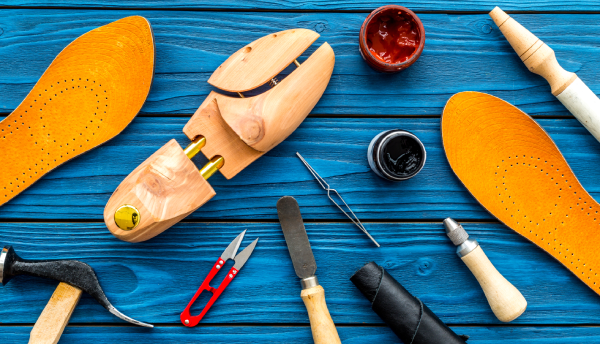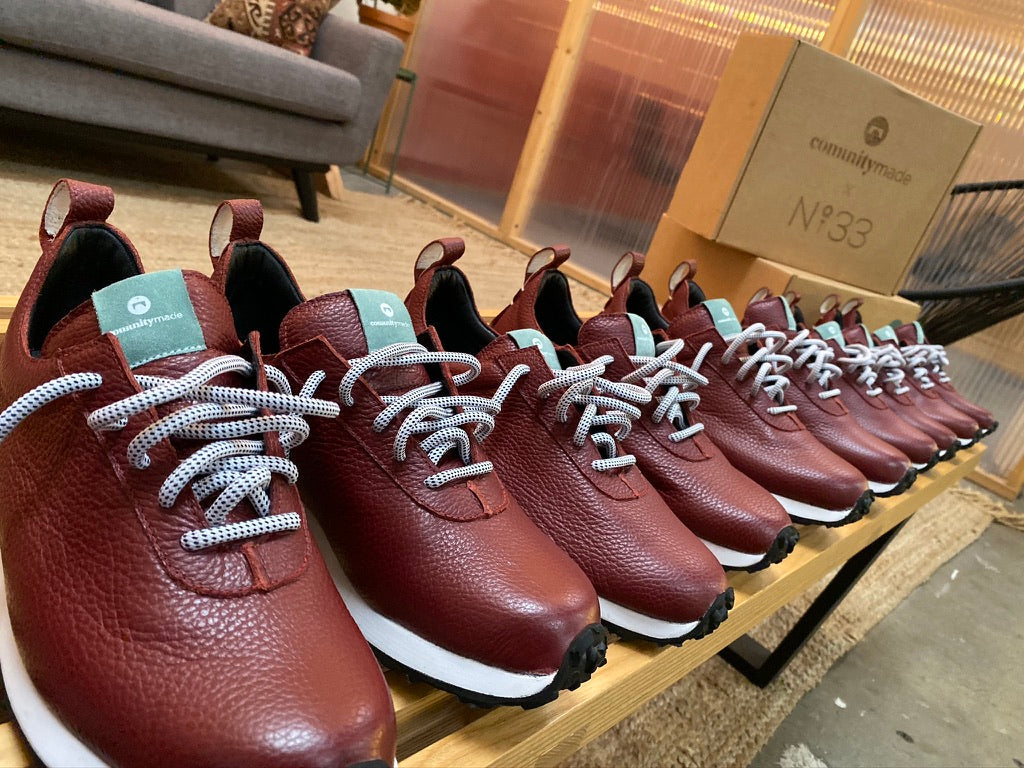
Shoes are a practical necessity and also an expression of our personality. They provide comfort and protection to our feet during our daily lives. However, have you ever stopped to wonder what materials are used to make the different parts of your shoes? In this blog, we will take a closer look at the shoe manufacturing process and the types of materials shoe makers typically use for the various parts of shoes. We will also discuss sustainable and eco-friendly processes in material sourcing and recycling and how they can affect shoe design.
An Overview Of the Manufacturing Process
The footwear manufacturing process can be divided into three main stages: preparation, assembly, and finishing. The preparation stage involves creating the shoe's components, such as the sole, upper, and lining. The assembly stage is where the components are stitched or glued together, and the finishing stage involves adding the final touches to the shoe, such as polishing and packaging.
Again, this is a simple overview, so if you want to know more about how environmentally conscious shoes can be, you can come visit us at COMUNITYmade right here in Los Angeles.
What to Know About the
Parts of a Shoe and
Materials Used
Shoe Soles:
The sole of a shoe is one of its most important components. It provides traction and support to the feet. Many shoe soles are made of rubber, which is a durable and waterproof material. Luxury shoes may have leather soles, which are comfortable but less durable than rubber. Sports shoes have soles made of EVA foam, which provides cushioning and shock absorption.

The Upper:
The upper part of a shoe covers the top of the foot and is made of different materials depending on shoe style and purpose. Athletic shoes have uppers made of synthetic materials such as polyester fiber and PU leather, which are lightweight and breathable. Dress shoes may have uppers made of leather, which is a luxurious and durable material. Knee-high boots often include rayon lycra, which is stretchy and comfortable. Textile shoes use various woven and knitted fabrics for their uppers.

Inside Lining:
The lining of a shoe is the material that comes into contact with the feet. It provides comfort and helps to absorb moisture. Lining materials can vary depending on the shoe's purpose. Athletic shoes may have a mesh lining, which is breathable and helps to keep the feet dry. Luxury shoes may have a leather lining, which is soft and comfortable.

Sustainability and Eco-Friendly Production Processes
The fashion industry has been cited as a contributor to pollution globally, and the shoe industry is no exception. However, some forward-thinking shoe companies are taking steps to reduce their environmental impact by using sustainable and eco-friendly materials and processes, including using recycled materials. To learn more about the footwear industry and sustainability, click here.
Commonly Used Sustainable Materials
Some shoe companies are using sustainable materials such as organic cotton and bamboo and recycled materials like rubber, plastic bottles, and discarded fishing nets. These materials are eco-friendly, reduce waste, and have a lower carbon footprint than traditional materials. To learn more about how leather and faux leather impact our world when proper care is not taken, click here.
Eco-Friendly Processes
Some advanced companies are also adopting eco-friendly processes such as waterless dyeing, which reduces water usage, and using renewable energy sources like solar and wind power to power their factories. Additionally, some shoemakers are exploring circular business models, where materials are reused or recycled, reducing waste and creating a more sustainable supply chain.
The Materials in Shoemaking
Leather
Leather is one of the most popular materials used in shoemaking. It is a natural and durable material that can withstand wear and tear. Leather can be used for the upper, lining, and sole of a shoe.

Synthetic Materials
Synthetic materials such as polyester, nylon, and polyurethane are used in shoemaking. These materials are lightweight and can be used for the upper, lining, and sole of a shoe.
Rubber

Foam

Designing Custom Shoes With Sustainable Materials
Designing custom shoes can be a fun and creative process that allows you to express your personality and style. If you're interested in custom shoes, why not choose sustainable materials, so you can also make a positive impact on the environment?
There are several companies that offer custom shoe design services using sustainable materials. For example, Allbirds, a popular shoe brand, uses eco-friendly materials such as recycled plastic bottles, merino wool, and sugarcane to create their shoes. They also have a carbon-neutral supply chain and use renewable energy in their factories.
One of the most popular sustainable choices is Molino Knit Premium from COMUNITYmade. Molino Knit is a high-tech engineered material that is made from rPET to provide excellent durability and comfort.
Plastic Bottles Can Be
Recycled to Make Shoes

Shoes can also be made from plastic, particularly recycled plastic bottles. After being purified and cleaned, clear bottles are shredded to create fibers used for shoe manufacturing. Although some types of non-engineered plastic shoes can be less breathable, some companies are using this material in an eco-friendly way by recycling old plastic.

However, for those who prefer luxury leather shoes, COMUNITYMade offers high-quality Italian leather and skilled artisans to handcraft each pair of shoes. They also offer a vegan option made from Field Corn that provides the luxurious look of leather. By prioritizing sustainability and quality, COMUNITYMade provides personalized shoes for those looking for a unique and ethical option.
One company, Rothy's, creates custom shoes using recycled water bottles and other sustainable materials. They use 3D knitting technology to create a seamless design, which reduces waste and minimizes the use of materials. Although popular, the styles and types of shoes they make are rather limited.
On the other hand, a pair of custom shoes at COMUNITYmade can be made of any sustainable material you like and in just about any style.
By choosing sustainable materials and eco-friendly processes, shoemakers can reduce their environmental impact and create a more sustainable future. As consumers, we can also make a difference by choosing to buy shoes made from sustainable materials and supporting companies that prioritize sustainability.
To sum up, shoes are an essential part of our daily lives, and the materials used to make them can have a significant impact on the environment. Understanding the shoe manufacturing process and the materials used can help us make informed choices and support sustainable and eco-friendly practices. By designing custom shoes using sustainable materials, we can express our style and make a positive impact on the environment.





Good information about footwears.. especially l wondered about reuse products from plastics.. Thank you..